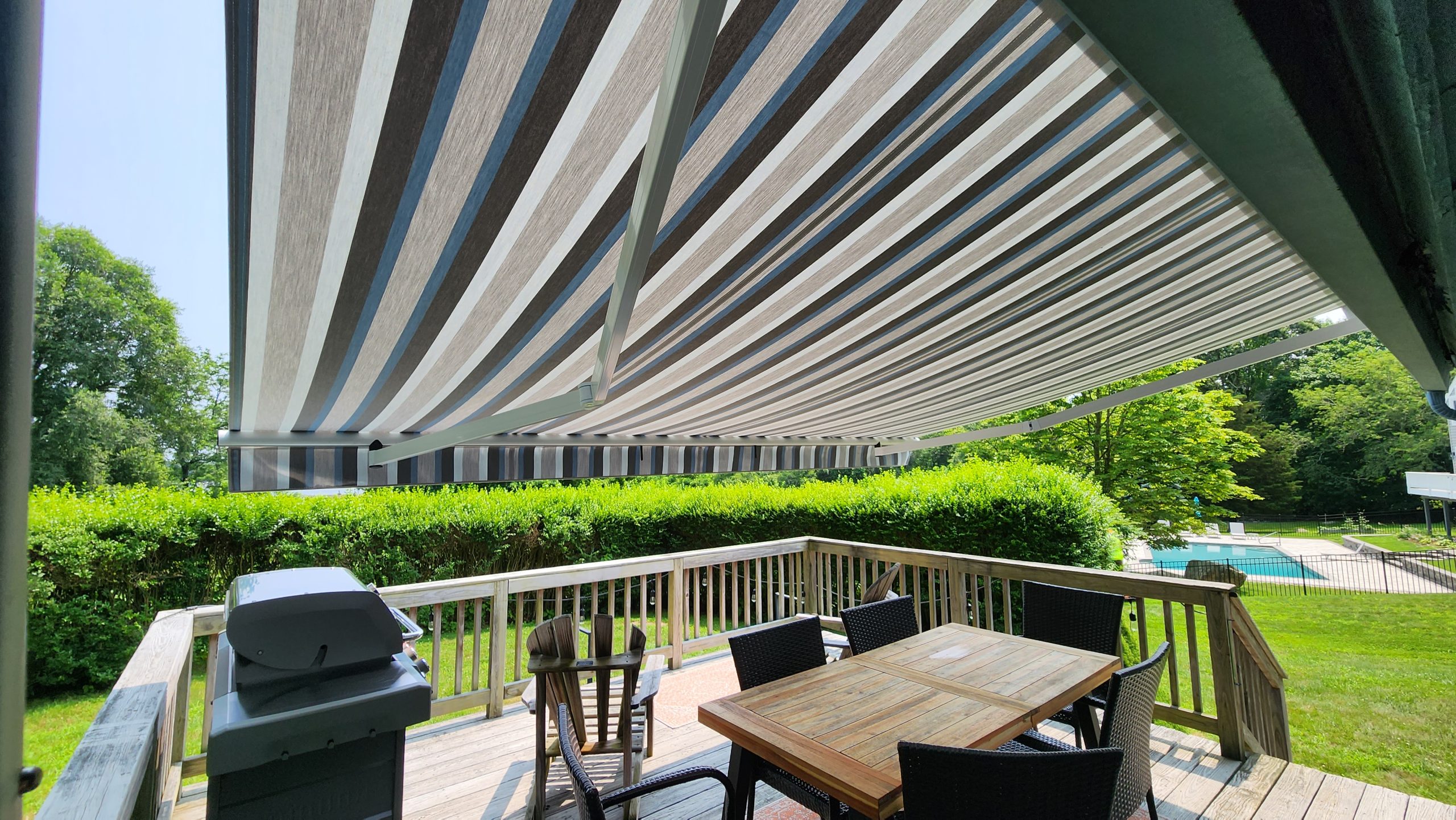As the seasons change, it’s important to protect your home’s exterior features—especially your awnings. With the right care and preparation, your awnings can withstand colder temperatures, wind, and moisture, ensuring they remain in top condition year after year.
Inspect for Damage
Before the weather turns, carefully inspect your awnings for any tears, rusted hardware, or mildew buildup. Catching small issues early can prevent more costly repairs later. Make any necessary fixes to fabric or frames before storing or reinforcing them for winter.
Clean Thoroughly
Dirt and debris left on your awnings can cause staining and promote mildew growth during damp weather. Use a mild soap and water solution to gently clean the fabric and frame, then allow it to dry completely before retracting or covering.
Retract or Remove When Possible
If your awnings are retractable or removable, pull them in or take them down for the winter months. This protects them from snow, ice, and strong winds. Be sure they’re stored in a dry, indoor area to prevent mold and fabric damage.
Use Weatherproof Covers
For fixed awnings that can’t be retracted, invest in durable weatherproof covers. These act as a barrier against snow and ice, preserving both fabric and frame integrity during the off-season.
Maintain Hardware
Lubricate moving parts and tighten bolts and screws to keep mechanical components in good shape. Proper maintenance ensures your awnings are ready to perform when warmer weather returns.
Preparing your awnings for fall and winter helps shield them from moisture, wind, and freezing temperatures. With a thorough inspection, proper cleaning, protective covers, and a little hardware maintenance, you can keep your awnings in great shape and ready to go when spring returns.

